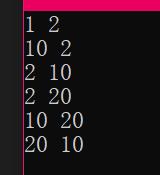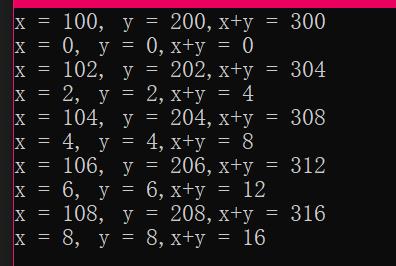[C++11]可调用对象绑定器
Posted Wecccccccc
tags:
篇首语:本文由小常识网(cha138.com)小编为大家整理,主要介绍了[C++11]可调用对象绑定器相关的知识,希望对你有一定的参考价值。
std::bind用来将可调用对象与其参数一起进行绑定。绑定后的结果可以使用std::function进行保存,并延迟调用到任何我们需要的时候。通俗来说,它主要有两个作用:
1.将可调用对象与其参数一起绑定成一个仿函数。
2.将多元(参数个数为n,n > 1)可调用对象转换为一元或者(n -1)元可调用对象,即只绑定部分参数。
绑定器函数使用语法格式如下:
//绑定非类成员函数/变量
auto f = std::bind(可调用对象地址,绑定的参数 / 占位符);
//绑定类成员函数/变量
auto f = std::bind(类函数 / 成员地址,类实例对象地址,绑定的参数 / 占位符);
代码如下:
#include <iostream>
#include <functional>
using namespace std;
void output(int x, int y)
{
cout << x << " " << y << endl;
}
int main()
{
bind(output, 1, 2)();
bind(output, placeholders::_1, 2)(10);
bind(output, 2, placeholders::_1)(10);
//bind(output, 2, placeholders::_2)(10);//error,调用时没有第二个参数
bind(output, 2, placeholders::_2)(10, 20);
bind(output, placeholders::_1, placeholders::_2)(10, 20);
bind(output, placeholders::_2, placeholders::_1)(10, 20);
return 0;
}
测试结果:

可调用对象绑定器的使用:
代码如下:
#include <iostream>
#include <functional>
using namespace std;
void testFunc(int x, int y, const function<void(int, int)> &f)
{
if (x % 2 == 0)
{
f(x, y);
}
}
void output_add(int x, int y)
{
cout << "x = " << x << ", y = " << y << ",x+y = " << x + y << endl;
}
int main()
{
for (int i = 0; i < 10; i++)
{
auto f = bind(output_add, i + 100, i + 200);
testFunc(i, i, f);
auto f1 = bind(output_add, placeholders::_1, placeholders::_2);
testFunc(i, i, f1);
}
return 0;
}
测试结果:

代码如下:
#include <iostream>
#include <functional>
using namespace std;
class Test
{
public:
void output(int x, int y)
{
cout << "x = " << x << " " << "y = " << y << endl;
}
int m_number = 100;
};
int main()
{
//成员函数绑定
Test t;
auto f2 = bind(&Test::output, &t, 520, placeholders::_1);
f2(1314);
//成员变量绑定
auto f3 = bind(&Test::m_number, &t);
cout << f3() << endl;
f3() = 666;
cout << f3() << endl;
return 0;
}
测试结果:

可调用对象包装器的使用:
代码如下:
#include <iostream>
#include <functional>
using namespace std;
class Test
{
public:
void output(int x, int y)
{
cout << "x = " << x << " " << "y = " << y << endl;
}
int m_number = 100;
};
int main()
{
//成员函数绑定
Test t;
auto f2 = bind(&Test::output, &t, 520, placeholders::_1);
f2(1314);
function<void (int,int)> f22 = bind(&Test::output, &t, 520, placeholders::_1);
//成员变量绑定
auto f3 = bind(&Test::m_number, &t);
function<int&(void )> f33= bind(&Test::m_number, &t);
cout << f3() << endl;
f3() = 666;
cout << f3() << endl;
return 0;
}
以上是关于[C++11]可调用对象绑定器的主要内容,如果未能解决你的问题,请参考以下文章
C++编程经验(11):std::function 和 bind绑定器